The pool pump is literally the heart of your pool’s circulation system. But just like our own hearts, we have a tendency to neglect the health and well-being of the pool pump and then freak out when it’s not working properly. There are probably dozens of pool pump mistakes out there. . . here are our top 5.
Not Cleaning Pump Basket
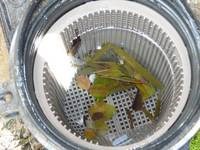 Let’s start with the very basics. The pump strainer basket exists to catch debris but it can’t clean itself. You need to reach in there and get the gunk out. If you don’t, the pool will have decreased water flow which means reduced filtration and ultimately, the dreaded algae bloom. The pump basket should be cleared out weekly and even more frequently during the fall and spring when there is more debris in the pool. Learn more here about how to clean your pump strainer basket.
Let’s start with the very basics. The pump strainer basket exists to catch debris but it can’t clean itself. You need to reach in there and get the gunk out. If you don’t, the pool will have decreased water flow which means reduced filtration and ultimately, the dreaded algae bloom. The pump basket should be cleared out weekly and even more frequently during the fall and spring when there is more debris in the pool. Learn more here about how to clean your pump strainer basket.
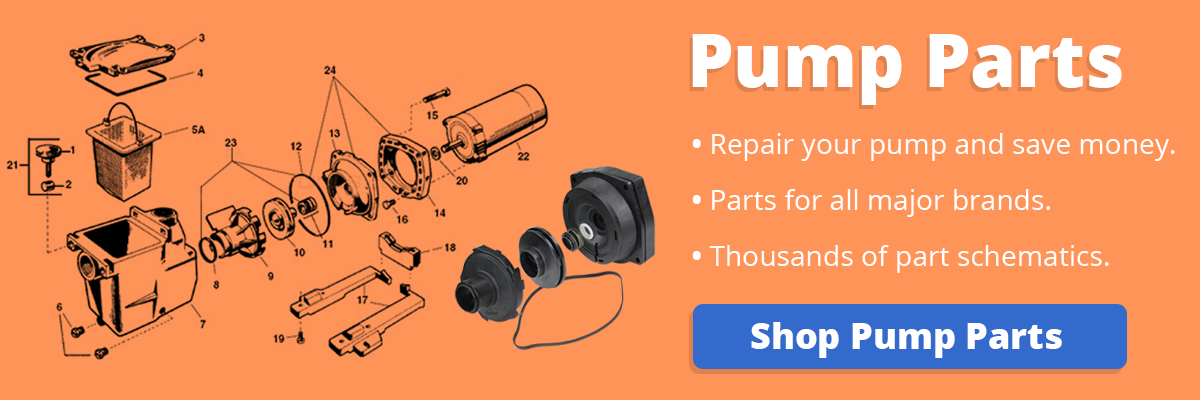
Running Pump Too Little or Too Much
Some pool owners, desperate to save money on their electric bills, actually cost themselves more in the long run by not running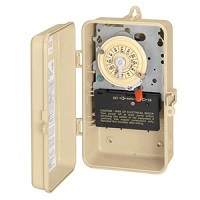 the pump long enough. To maintain water quality and safety, all of the water in your pool should be turned over (meaning filtered) once a day. Depending on the gallons per minute your pump is moving, this usually takes 8 – 12 hours. If you don’t give all the water a chance to pass through the filter, you can end up with dirty, cloudy water, algae and the need to spend more on chemicals and maintenance than you would’ve given to your utility company to run the pump a little longer.
the pump long enough. To maintain water quality and safety, all of the water in your pool should be turned over (meaning filtered) once a day. Depending on the gallons per minute your pump is moving, this usually takes 8 – 12 hours. If you don’t give all the water a chance to pass through the filter, you can end up with dirty, cloudy water, algae and the need to spend more on chemicals and maintenance than you would’ve given to your utility company to run the pump a little longer.
On the flip side, there is running the pump too long. Some believe in keeping it going 24/7 which might be necessary under certain conditions but for most pools is just wasteful overkill. It drains both energy and money while causing unnecessary strain on the pool pump motor. Your pump will burn out more quickly and require replacement of parts or the entire unit. Plus, you are driving your neighbors crazy! Give them a break from that humming motor and save some money in the process. For standard residential pools with moderate use, you only need to turn over all the water once in a 24 hour time period. If you are into the math behind pump run times and savings, read our How to Reduce Your Pool Pump Energy Bill guide.
Sizing Pump Incorrectly
There is a very persistent myth in the pool world that the higher the horsepower, the better. As a result, it is probably safe to say that the majority of pools have oversized pumps. We regularly hear from customers with a relatively small pool (~ 10,000 gallons) and a pump that is moving 2 – 3 times the gallons per minute required. This means unnecessarily high electric bills and a lot of wasted energy. Too large of a pump can cause poor filter performance and even damage it, if the filter is not also oversized accordingly. Another possible consequence is pump cavitation in which bubbles form in the water inside the pump and then burst with great force, resulting in damage to the impeller and other internal parts.
Conversely, some pool owners try to save a few bucks by buying a lower horsepower pump that is too small for their pool’s demands. This is especially true when a spa and other water features, such as deck jets or waterfalls, are tied into the pool pump. Throw an automatic suction cleaner into the mix and that undersized pump is overloaded.
The bottom line? Do the math to calculate how many gallons are in your pool (and spa if applicable) and how many gallons per minute are required to filter all of that water in 8 – 12 hours. Then consult the manufacturer’s pump performance charts to determine what pump actually meets your needs. Or skip all that, contact us and we’ll do the legwork for you!
Not Priming Pump / Running Dry
Most in-ground pool pumps are self-priming but do not mistakenly think this means your pump can initially prime itself. “Self-priming” refers to the pump being able to reprime, and this depends upon a proper initial prime and maintenance. Priming a pump means filling the intake with water. Then upon start, the pump will push any air out through the discharge. Read our step-by-step priming guide for all the details.
A loss of prime will cause the pump to run dry which you never want to do. Keeping an eye on the pool water level is a must – don’t let it drop below the skimmer opening. If the pump has no water to pull from the skimmer, it will draw air instead and lose prime which leads to running dry. At the least, this will ruin the motor shaft seal which is what prevents water from getting inside the motor. If it keeps running dry, the pump heats up and so does the water inside. Commence melting plastic. The motor might survive due to the high temp sensor kicking in but the wet end of the pump will be a casualty. If your pump has run dry and appears to have survived, replace the shaft seal!
Not Changing the Shaft Seal During Motor Replacement
 I literally grind my teeth over this one. Replacement pool pump motors are an extremely popular product for us – and with good reason. In the majority of cases, when a pump fails, the wet end is fine and only the motor needs to be replaced. Since a pump motor is roughly half the price of a new pump, it makes often sense to keep the existing wet end and just buy a new motor. Especially true for DIYers who don’t have to pay an installer.
I literally grind my teeth over this one. Replacement pool pump motors are an extremely popular product for us – and with good reason. In the majority of cases, when a pump fails, the wet end is fine and only the motor needs to be replaced. Since a pump motor is roughly half the price of a new pump, it makes often sense to keep the existing wet end and just buy a new motor. Especially true for DIYers who don’t have to pay an installer.
But so many people buy just the motor and neglect the small yet extremely important shaft seal. This seal keeps water out of the motor (water inside motor + time = failed motor). Yes, your existing motor will already have a seal on the shaft and it might appear to be in good shape and ok to reuse. However, shaft seals warp over time. If you install the old seal on a new motor, there is a good chance it will not mate properly, leading to leakage which voids the warranty on the new motor.
So don’t skip the new shaft seal! Depending on the pump model, you’re looking at about $15 – $30 to protect a new motor that is worth much more than that. Invest those few extra bucks – you will not regret it. While you’re at it, motor replacement is a great opportunity to upgrade other internal parts most likely to fail. Check for our complete tune up kits, available for many of the most common pool pumps. These include the shaft seal, along with o-rings, gaskets and lubricant. For help with replacing the seal, check out our how to guide and video.


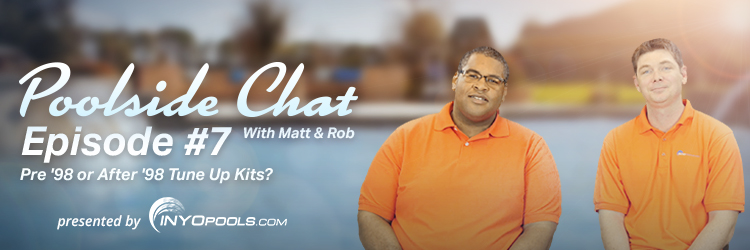
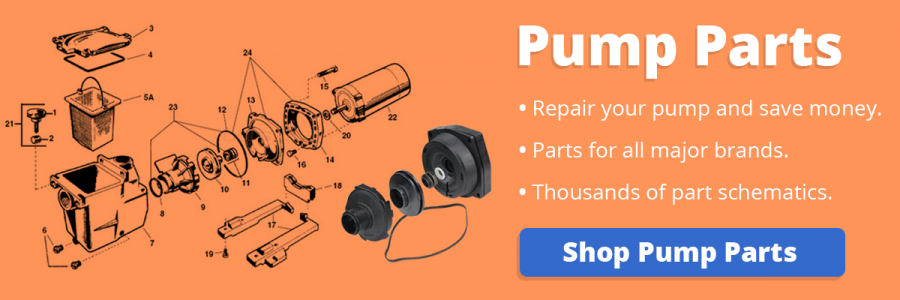
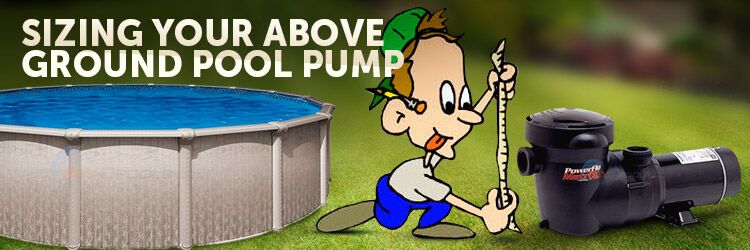







Can a 3/4 HP energy efficient pump work on a 24 ft pool? I didn’t change the size when ordering and read where you can go a little lower on HP when using an energy efficient pump. Didn’t k is if I should send it back for a bigger one or if it would work?
Did you adjust the chemicals? So I tested and found that the chemicals needed an adjustment. Did I actually do it? The easiest mistake in the world is to procrastinate and just flat not get to adjusting your pool’s chemicals. The result can be a big headache to clean up later, like algae, cloudy water, or scale-forming.
Can I use the pump without using the sand filter? Or will the pump not work if they aren’t connected?
Most sand filters have a “recirculate’ setting that bypasses the filter media. If you do it this way, you do not have to disconnect any pipes.
Found a used 16’x42” Intex pool on Facebook and considering purchasing; however, that pool hasn’t been used in 2yrs and left in storage. Is it a good idea to buy it and try it out?
No, it is not a good idea; and we explain why in this article Should I buy a used above ground pool?.
We are buying a small above ground pool That’s only about 1000 gallons. My kids are very sensitive to chlorine so I was going to buy the Intex saltwater system, but the smallest pump/filter I could find was for a minimum of 2800 gallons. Would I still be able to use this and just adjust the settings or do you have any recommendations?
You can still use the larger pump, and run it for an hour or two a day and your pool should be pretty clean. I maybe wouldn’t run the pump while the kids are in there the first time you fire it up.
Why after that I have cleaned my pool with the denominator for about an hour and the pool is sparkling clean but within an half an hour my pool has sand in. Is the filter sand needing to be changed . I do however backwash twice a week for two minutes at a time then rinse.
If you are seeing filter sand in your pool, the usual culprit is a cracked lateral or hub assembly. The only way to figure that out is to open inspect them for damage.
Also read: Sand in Your Pool?
I have inground pool and would like to know how to do correctly back wash , does the pump hs to be turned off as the time performing back wash?
Also my pressure went down when I do the back wash as well as in the jets..what caused it?
This guide will show you how to backwash your filter: How To Backwash a Pool Sand Filter
Have a read of that guide and it should answer any questions. As for the pump running, when changing a setting on your multiport valve, always turn off the pump before turning the handle.
I have an 18ft round above ground. Bought a new 1.5hp dual speed motor/pump and also a heat pump. It now will be hard plumbed. 1)what is the best material ie pvc or flexible spa hosing? 2) I know I need bypass valves but what is this close off or that thing you can see through? Do I need one of those on in & out plumbing. There are literally NO you tube set up vids for this
Hello-
I have a spa water level that is @ 2′ higher than the level of the pool.
Can I run them both with a one pump system without the spa level
dropping to the pool level , or overflowing the spa ?
I am building a pool on a slope behind my home and the pump room is actually under the pool. The distance from the skimmer to the pump suction will be about 10 to 12 feet and from the bottom drain to the pump suction some 8 feet.. Do I have to take any special procedures for having extra pressure on the pump when it it turned off? The same goes for the return lines that will have quite the amount of water pushing back when the pump turns off.
I won’t have any problems with suction but I am worried that there will be too much pressure on the pump when it is turned off because of the high water column because the pump is that much lower than the pool.
We just set up an above ground pool. Got everything hooked up. Skimmer Weir door is down allowing water to flow to pump. After about 25 minutes I check and there’s no water in the pump just air. The weir door is still down allowing water to flow freely – skimmer basket is clean – water still comes out of the sand filter is this normal to not have water in the pump all the time?
The way above ground pools and their equipment are usually set up, the pump is gravity fed. So, as long as there is water reaching the skimmer, the water is heading downhill into the pump.
The way this problem is described, it sounds like the water is entering the skimmer, stops before the pump, then somehow is coming out of the sand filter. This type of water flow wouldn’t happen unless you have a bypass before the valve. Are you sure the pump strainer housing is empty? When the strainer lid is filled with water but has no air bubbles, it can look like the strainer housing is empty.
Hi, my pool pump is operating on high RPM and not dropping to the scheduled RPM setting anymore. I cant figure out why. The control panel hasnt been changed at all and the schedules are still kicking on the pump, but the pump is very loud and not dropping to the lower RPM. Any idea what is going on?
Is this a dual-speed or a variable speed? A part, catalog, or model number of the motor would help us figure out what might be causing this. Also do you have this set up to a basic intermatic timer, or do you have an automation system?
Variable Speed Inteliflo Pump. Its controlled by an Easy Touch Pentair Controller.
Hello,
After back-washing, I accidentally forgot to place the arm back on filter. I didn’t remember until after I already put the filter powder in the skimmer. What should I do? Should I put more filter powder in there or will it be ok?
It would depend on how much of the DE was backwashed to waste. If you don’t know or can’t tell how much DE is in the filter, I would backwash it and start over again, this time making sure the valve is set correctly before adding new DE.
Hello,
What size of pump should I have for a suction sweep? We bought a sweep and when hooked up it loses prime and never gets it back. Took it to my grandmothers pool to test and it works perfectly. Also the whole system works perfectly until we add the sweep. The only difference I’ve found between our pump and my grandmothers is hers is 11.0 amps and ours is 9.6 does that mean we need a more powerful pump?
Hi,I have a above ground pool with a sand filter.my skimmer stops sucking in water sometimes. Could you tell me what you think? And should the water level be all the way above the skimmer or half way? Thank you so much
The water level should be halfway up the skimmer face. If your water flow is stopping then you may need to clean your filter or the pump strainer basket.
Our neighbourhood has a huge unground pool. They have left the pump running for more than 3 months continuously… it’s never been off in this time. It’s now squeezing its bits off and it seems they don’t care. The water is still dark green and the pool had been left unattended.
Can the pump catch fire or explode as we are concerned of potential damages to property or imageries to all neighbours.
I had a new motor installed on my pool and it still is not circulating well however it was primed when installed and there is water there. I have a salt system, wondering what the problem could be? I read online that a bad water pressure gauge could be the problem.
Are you seeing any larger than normal air bubbles in the strainer lid of the pump? We have this guide on low water pressure as things to look out for: How to Correct Low Water Pressure in Your Pool System